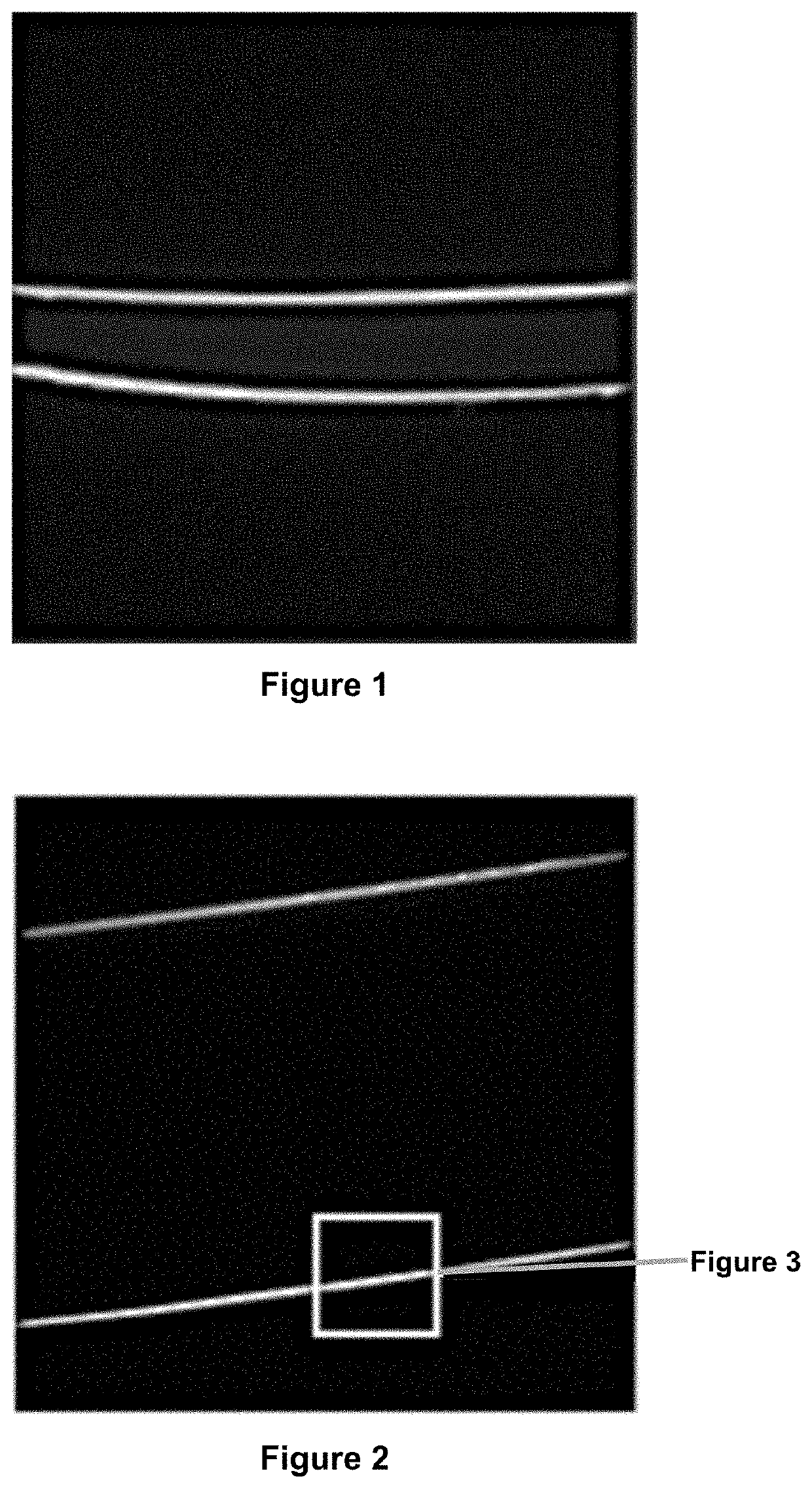Method for determining coating thickness on coated contact lenses
a technology of coating thickness and contact lens, which is applied in the direction of instruments, other domestic objects, optical elements, etc., can solve the problems that the method cannot be used to image the coating or determine the coating thickness of a contact lens product, and the afm may not be suitable for imaging the coating from the lens edge to the lens edg
- Summary
- Abstract
- Description
- Claims
- Application Information
AI Technical Summary
Benefits of technology
Problems solved by technology
Method used
Image
Examples
example 1
[0142]A fluorescently-labeled polycationic polypeptide, Rhodamine-NH-(A[DAP]11-KCOOMe, is prepared by using a solid phase peptide synthesis approach. DAP stands for 2,3-diaminopropionic acid; Me stands for methyl.
[0143]The prepared fluorescently-labeled polycationic polymer is dissolved in dimethyl sulfoxide (DMSO) at a concentration of 2 mg / mL as a staining stock solution. A phosphate buffered solution is prepared by adding 10 μL of the staining stock solution into 700 μL of phosphate buffered saline (which has a pH of 7.2±0.2 at 25° C. and contains about 0.044 wt. % NaH2PO4.H2O, about 0.388 wt. % Na2HPO4.2H2O, and about 0.79 wt. % NaCl and; wt. % represents weight percent) in each wells of a 24 well plate. Mixing is carried out directly in the wells. One contact lens is placed in each well containing the phosphate-buffered solution of the fluorescently-labeled polycationic polymer and incubated on a horizontal shake overnight.
[0144]The cross-section of a stained contact lens is or...
example 2
[0146]Coated silicone hydrogel contact lenses are prepared according to the procedures described in Example 17 of U.S. patent Ser. No. 10 / 449,740. Each of the coated silicone hydrogel contact lenses has a poly(acrylic acid) (PAA) base coating on a silicone hydrogel contact lens and a hydrogel coating on top of the PAA base coating.
[0147]These coated silicone hydrogel contact lenses are subjected to the selective staining procedures described in Example 1. Cross-sections of the stained coated silicone hydrogel contact lenses are orthogonally cut and then imaged as described in Example 1. FIG. 1 shows an image in submicron resolution of the cross-section of a stained coated silicone hydrogel contact lens.
example 3
[0148]Coated silicone hydrogel contact lenses are prepared according to the procedures described in Example 19 of U.S. Pat. No. 8,480,227. Each of the coated silicone hydrogel contact lenses has a poly(acrylic acid) (PAA) base coating on a silicone hydrogel contact lens and a hydrogel coating on top of the PAA base coating.
[0149]These coated silicone hydrogel contact lenses are subjected to the selective staining procedures described in Example 1. Cross-sections of the stained coated silicone hydrogel contact lenses are orthogonally cut and then imaged as described in Example 1. FIGS. 2 and 3 show an image in submicron resolution of the cross-section of a stained coated silicone hydrogel contact lens. Aline scan in image analysis is used to measure the thickness of the coating at a location as indicated in FIG. 2b and the results is shown in FIG. 4. This plot of fluorescence value vs. the distance shows that the coating thickness is about 3-5 microns.
PUM
| Property | Measurement | Unit |
|---|---|---|
| molecular weight | aaaaa | aaaaa |
| thickness | aaaaa | aaaaa |
| molecular weights | aaaaa | aaaaa |
Abstract
Description
Claims
Application Information
 Login to View More
Login to View More - R&D
- Intellectual Property
- Life Sciences
- Materials
- Tech Scout
- Unparalleled Data Quality
- Higher Quality Content
- 60% Fewer Hallucinations
Browse by: Latest US Patents, China's latest patents, Technical Efficacy Thesaurus, Application Domain, Technology Topic, Popular Technical Reports.
© 2025 PatSnap. All rights reserved.Legal|Privacy policy|Modern Slavery Act Transparency Statement|Sitemap|About US| Contact US: help@patsnap.com



